Results are in for the California Sate Fair Wine Competition! Follow this LINK to download details.
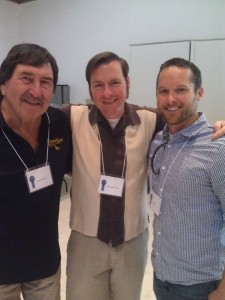
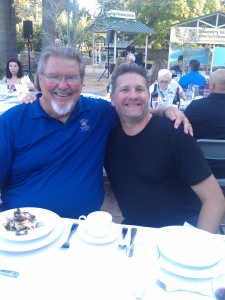
Results are in for the California Sate Fair Wine Competition! Follow this LINK to download details.


This past weekend, Helen Bacigalupi and her family celebrated the 50-year anniversary of planting the original blocks of Chardonnay and Pinot Noir grapes at the famed Bacigalupi Vineyards in Sonoma County’s Russian River Valley.
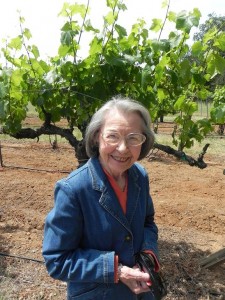 It’s a story that began more than six decades ago when Helen married Charles Bacigalupi, a Sonoma County native, whose grandfather had a winery on Chiquita Road and who grew up filling jugs of wine straight from the barrel for customers who shopped at his family’s Bacigalupi Market on Fourth Street in Santa Rosa.
It’s a story that began more than six decades ago when Helen married Charles Bacigalupi, a Sonoma County native, whose grandfather had a winery on Chiquita Road and who grew up filling jugs of wine straight from the barrel for customers who shopped at his family’s Bacigalupi Market on Fourth Street in Santa Rosa.
After meeting in college, the young lovebirds were married and moved to Healdsburg, where Charles established his long-term career as a dentist and Helen worked a short stint as a pharmacist before she took on her new role as the family’s official ranch keeper and accountant when the Bacigalupis purchased the old Goddard Ranch on Westside Road in 1956.
At the time of purchase, the hillside property featured 16 acres of vineyards planted with a classic field blend of Zinfandel mixed with Alicante Bouschet, Golden Chasselas, Muscat and Mission. But back then the more lucrative crops on the property were fruit trees and small walnut orchard. So to make ends meet, Helen and Charles bought ten pure-bred Angus steers from the nearby MacMurray Ranch owned by actor Fred MacMurray and raised them and the offspring on the pasture land at the ranch over the next 15 years.
In 1964 the focus on grape growing on the property started to change, when the family planted a new 14 acres parcel of vineyards which included Chardonnay and the first Pinot Noir vines planted on Westside Road.
Once these new vineyard blocks were established, the Bacigalupis began selling grapes to Rodney Strong and the Foppiano and Seghesio families. In 1973, Helen sold 14 tons of Chardonnay to Chateau Montelena, which eventually became 40 percent of the master blend in the famous wine that won over the French in the famed Paris Tasting in 1976.
Helen’s tale of how the wine made it to Paris starts when she received a call from Mike Grgich (the Chateau Montelena winemaker in 1973) saying he would like to buy some of the Bacigalupi Chardonnay grapes he had heard so much about. After an agreement was reached, she sold the winery 15 tons. But, according to Helen, getting the fruit from Russian River Valley to Calistoga was not such an easy task.
“It took me six trips to the winery and I hauled the grapes with my little Volkswagen pickup and a custom-made trailer. It was a little scary because the Volkswagen didn’t have the guts to get over the hill from Alexander Valley to Calistoga in Napa Valley. So I would gun it at the bottom and pray to God that nobody got in my way going up the hill to slow me down. If that had happened, I never would have made it.”
Fast-forward three years. Helen was baking a cake to celebrate the Bicentennial anniversary on July 4, 1976 when the phone rang and it was Mike Grgich. He told her then that we had won the Paris Tasting against the French. He also inquired about buying more grapes, but she had to tell him I was sorry because they were already sold.
Helen went on to say that the impact of the Paris Tasting took several years. “Today it’s still impacting the wines made in Northern California but I don’t think that people here understood how important the award was at the time,” says Helen, now 89 years young. “On the other hand, the French felt the impact immediately!”
At the end of the 1970s, the family partnered with Peter Friedman of Belvedere Winery and bottled its first vineyard designate Chardonnay as part of the Grapemaker Series. A few years later, the 1982 vintage won the Sonoma Harvest Fair Sweepstakes and the wine was eventually served at the White House. But after a decade of national distribution, the Bacigalupis ended their partnership with Healdsburg Wine Growers, Inc and made its last bottles of the Belvedere Bacigalupi Chardonnay in 1987.
As the demand for premium grapes expanded, the family began developing vineyards on newly purchased properties, including a 15 acre parcel on Lytton Station Road in Alexander Valley in 1973; the Bloom Ranch adjacent to the original Bacigalupi property in 1983; and the Frost Ranch on Westside Road in 1993.
Over the past two decades, most of the Chardonnay, Pinot Noir, Zinfandel and Petite Sirah grapes grown on the properties have been sold to a wide range of boutique producers, including Wiliam Seylem, Armida, Fantesa, Graton Ridge, Rudd, Tudal, Arista, Gott, Venge, Gracianna and John Tyler Wines (a brand started by Charles and Helen’s son John and his wife Pam began in 2002). But today, a portion of the precious fruit is being used by winemaker Ashley Hertzberg, who was hired by the family in 2011 to create a new series of Bacigalupi wines that are primarily sold to high-end restaurants and at the new tasting room at the base of the Goddard property.
Today’s game to watch is United States vs. Ghana / ESPN 2:30 PST
United States: Before playing its first game in the 2014 FIFA World Cup, the US soccer team is already going through a small identity crisis. For starters, German-born coach (Juergen Klinsmann) has already cut seasoned veteran Landon Donovan from the roster and candidly said that his team will not win the 2014 World Cup championship. For that reason, more pressure has been placed on star forward Clint Dempsey and the other younger players to score and goalie Tim Howard to hold his own against the strong and speedy team from Ghana. Of course, there’s also the fact that they are playing their first game in Natal, Brazil (a.k.a. “City of the Sun”) which has had heavy rainstorms over the last few days. Then, when you considering the fact that the next two opponents after Ghana are Germany and Portugal, there’s a reason why Group G is loosely referred to as the division from hell. So realistically, today’s game is a do-or-die situation for the US team to advance to the next round.
Although we can’t all be there to help the team, an easy good luck charm would be to bust open a bottle of the Carol Shelton 2012 “Wild Thing” Old Vine Zinfandel, Mendocino County ($19) made with fruit from old and mature vineyards, wild yeast, and aged in fine oak barrels.
Often referred to as California’s “sweetheart” grape, the first cuttings of zinfandel were brought to the West Coast during the Gold Rush boom in the 1850s. Before Prohibition, plantings were spread throughout the state, and thanks to the natural vigor of the thick-skinned red grape and its resilient character to avoid diseases, many of these original vineyards can still be seen dotting the landscape in Mendocino County and other prestigious winegrowing regions throughout California.
For these reasons, the new release of the 2012 Wild Thing packs a serious punch with lush, jammy flavors of black raspberry, bright cherry, plum, blood orange peel, clove, pepper and a hit of vanilla. In Carol’s words: “Remember—you are what you drink…” Like the US soccer team, it’s a very youthful wine with plenty to prove. Go team, go! www.CarolShelton.com.
Ghana: From the coast of West Africa, Ghana is a very serious soccer team who has beaten the US in the last two World Cup matches the teams have played. So it makes sense that the name of the country literally means “Warrior King.” For cuisine, Ghana is best known for seafood, soups and stews. One of the popular entrees is grilled Tilapia filet served with tomatoes, spicy sauce made with chilies and peppers, and Banku (a starch made with corn maize). With historic connections to German merchant marines and a portion of the country once known as the German Gold Coast, a fantastic pairing with the flaky texture of the fish and layers of spice would be a German or Alsace-style white blend. One of my favorites is the Brooks 2012 “Amycas” White Table Wine, Willamette Valley ($18), a combination of Pinot Gris, Pinot Blanc, Riesling, Muscat and Gewurztraminer. This lovely domestic version of Edelzwicker (German for “noble blend”) features enchanting aromas of fresh citrus, honey and exotic fruits. On the palate, the wine is highlighted by notes of fresh lime, peach, mango and papaya, vibrant acidity, and a clean, crisp finish. Scary good. www.BrooksWine.com.
Today’s game to watch is Argentina vs. Bosnia-Herzegovina / ESPN 2:30 PST
Argentina: Nifty facts to know about Argentina and wine before today’s kick-off. First, the country is the fifth largest producer of wine in the world. Second, the country ranks third in consumption of wine with an average of 41 liters per person; in contrast, the US average is closer to 7 liters per person. So with that being said, the national Argentinean soccer team is not only hungry, but also very thirsty for their third world title at the 2014 FIFA World Cup.
To get ready for the first match with Bosnia-Herzegovina (the former country of Yugoslavia) on Sunday June 15 and the other scheduled matches against Iran and Nigeria; I would suggest priming the palate with a refreshing Argentinean white wine like the Susana Balbo 2013 Torrontes, which features fragrant floral aromas and fruit-driven flavors of citrus blossom, white peach, melon and ripe pear; zippy acidity; and a nice crisp finish.
Once the game gets started and the tension starts to build, I’d suggest moving on to a more powerful and complex wine like the Bodega Colomé 2010 Estate Malbec, a complex Malbec with smaller portion of Tannat, Cabernet Sauvignon, Syrah and Petit Sirah grown in the high-elevation region of Mendoza. Deep flavors of dark cherry, black raspberry, ripe currants, licorice, fresh herbs, lavender, violets and cracked pepper. Full-bodied, aggressive, and a classy finish that reminds me of an iron fist in a velvet glove. Now let’s see if the team can perform as well as this wine!
Bosnia-Herzegovina: While it’s true that Argentina is a formidable force in the world of wine and highly favored to win this game; Bosnia-Herzegovina’s secret weapon is Žilavka, a dynamic white grape that is indigenous to the southern part of the country. Via DNA, the grape variety is linked to the Prosecco and often compared to the famous Hungarian white varietal Furmint. But unlike the light fruity flavors of its Italian and Hungarian relatives, Žilavka has a deeper, richer profile with high acid and nutty flavors. The best example I’ve tasted is the Brkic 2010 Greda, an elegant white wine crafted by Josip Brkic and his family who grows the grapes on the unique limestone plateaus in the Mostar region in southern Bosnia-Herzegovina. Imported to the US by Blue Danube Wines, the wine features complex flavors of dried apricot, citrus, melon, pear and white pepper. Random and delicious; but definitely worthy of trying if you can get your hands on a bottle.

Today’s game to watch is England vs. Italy / ESPN 2:30 PST
UK: While England is not known for its wines, a fantastic option would be to try the Richard Grant NV Cuvée Rosé Brut, Napa Valley. This is an amazing chance to taste an extraordinary sparkling wine made with the Wrotham clone of Pinot Noir, cuttings of which Dr. Richard Peterson brought back from the village of Wrotham below London, England! Striking flavors of ripe raspberry, red apple, cherry, ruby grapefruit, and roasted hazelnuts. Elegant, gracious and very focused. Let’s hope Steven Gerrard and his mates can be on the top of their game today, too.
Italia: So many wine options, so little time. Since the game is being played at mid day, try the Nipozzano by Marchesi de Frescobaldi 2010 Riserva Chianti Rufina Riserva DOCG. With aromas of dark berries, tobacco, clove and licorice; the wine opens up in the glass with generous flavors of dark cherry, red cherry, dark chocolate, earth and freshly foraged truffle; layers of zesty spices and herbs; and a long, finish that is a trademark of the Chianti region. During the game, try the wine with a thin crust fungi pizza with sundried tomatoes and herbs.
Located in the foothills between Sacramento and South Lake Tahoe in Northern California, El Dorado County is known for its high elevation, pine forests and warm daytime temperatures. Following the discovery of gold in Coloma in 1848, the county became one of the top winegrowing regions in California before the turn of last century. The secret to this success was planting Zinfandel, Mission and other intriguing grape varieties used to make still wines, dessert wines and brandy in the combination of granitic soils and rugged sloping hillsides. But after a decline in plantings and the advent of Prohibition, the history of winemaking in the region was forgotten for nearly half a century.
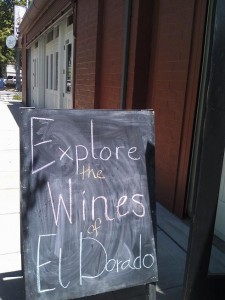
That changed when the first phase of plantings in the modern era happened in the 1970s. In addition to Zinfandel, the new vineyard blocks included fighting varieties such as Cabernet Sauvignon, Merlot, Chardonnay and Sauvignon Blanc. But it wasn’t until 2008 that the amount of vineyards surpassed the 2,100 acres planted in 1904.
After the appellation was granted by BATF on October 13, 1983, El Dorado has become one of the most intriguing winegrowing regions in California with newer plantings of Bordeaux varieties as well as a concerted effort to make signature wines with European varieties from the Rhone Valley, Italy and Spain. Over the past two decades, the diversification of grapes planted has made a big splash with consumers searching for full-bodied wines with deep flavors and layers of spice.
Today, the appellation features over 70 wineries and over 2,400 acres of vineyards. Most of the wines are made with estate grown grapes and vineyard designates. Besides the regular draw of thirsty consumers from Sacramento and the greater Bay Area; the newest visitors to the region are talented winemakers and representatives from high profile wineries who are looking to strike it big with purchases of high quality fruit at admirable prices.
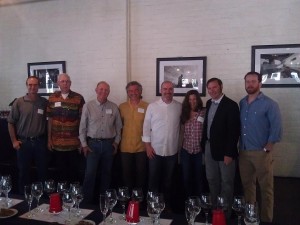
Last week, I was honored to moderate a special wine panel featuring some of the living legends, growers, and talented winemakers who work with the fruit from the region. Held in the charming events space at Mulvaney’s Building & Loan, a hip restaurant located in downtown Sacramento, the “Taste at a Higher Level” panel discussion and walk-around tasting was organized by El Dorado Winery Association and Solterra Strategies. Below are my notes of the wines featured on the panel. Also look for more of my reviews of #ElDoradoWines in upcoming issues of the The Sommelier Files. For more information on the wineries, maps and varietals grown in the region, visit www.ElDoradoWines.org.
Madrona Vineyards 2010 Blanc de Blancs, Extra Brut ($35) / Guest panelist: Winemaker & Proprietor Paul Bush.
Paul’s parents Richard and Leslie Bush purchased 52 acres of land on the ridge of Apple Hill a few miles from the Placerville in 1972. The family immediately rolled the dice by planting 32 acres of own-rooted vines at 3,000 feet, which made it the highest vineyard at the time in California. At third leaf, the family made the first wines down the road at Boeger Winery and the other young fruit was sold to Ravenswood, David Bruce and Robert Mondavi Winery. The winery, named after the native Madrona tree planted in the middle of the estate property, was completed in 1980.
SawyerSomm notes: Fresh, elegant and lively style of sparkling wine made with 100% Chardonnay planted at high elevations. Fragrant aromas and deep flavors of ripe stone fruit, grapefruit, Meyer lemon, a squeeze of lime, roasted almonds, mineral, high acidity, and a long crisp, dry finish. At the walk-around tasting, the winery also poured its stunning 2001 Cabernet Sauvignon that still tasted young, elegant and built to please. www.madronavineyards.com.
David Girard Vineyards 2013 Rosé ($22) / Guest panelist: Winemaker Grayson Hartley.
Founded in the mid -1990s by David Girard, the focus of this vineyard and winery has always been on French varietals. Today, the vines planted are all Rhone varieties and the winery produces 5,000 cases of Rhone style blends annually.
SawyerSomm notes: Food-friendly Rhone-style Rose for summertime made with 45% Mourvedre, 41% Grenache, 14% Counoise grown on the winery’s estate vineyard. Attractive pink hue; bright aromas of ripe red fruits, rose petal and vanilla; fresh flavors of red plum, cherry, watermelon rind, subtle spices; and a refreshing burst of racy acidity on the finish. www.davidgirardvineyard.com.
Sierra Vista 2013 “Lynelle” Red Rhone Blend ($29) / Guest Panelist: Proprietor John MacCready
One of the true Rhone varietal pioneers of California, John and his family planted the first Syrah vines in El Dorado County and the Sierra Foothills in 1979. Today, John and his staff offer thirsty consumers a nice selection of crafted wines made with Rhone varietals, Zinfandel, Cabernet, Merlot, Sauvignon Blanc and Chardonnay.
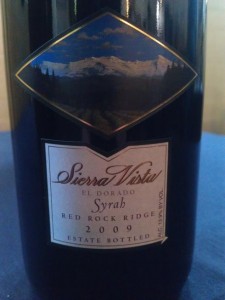
SawyerSomm notes: Young and perky, this new red blend made with Grenache, Cinsault, Syrah and Mourvedre hasn’t been release yet but it’s already rather tasty. With fresh aromas and vibrant flavors of ripe raspberry, dark cherry, granite, tobacco, red earth and savory spices, it reminds me of a fine medium-bodied French Rhone blend that you would drink when eating fresh caught fish from the Mediterranean. In this case, I’d be content with a glass of this wine and a nice filet of fresh Ahi tuna seared on the outside and pink in the middle. www.sierravistawinery.com.
Boeger Winery 2011 Barbera / Guest Panelist: Proprietor Greg Boeger
Known as the “Granddaddy” of modern winemaking and viticulture in the El Dorado appellation; Greg and his wife Susan purchased their original piece of property in 1972. Located a few miles north of the historic city of Placerville, the winery and estate vineyards are located on Carson Road, a well-traveled roadway which leads to “Apple Hill,” a popular agriculture destination which attracts a million visitors per year. From the 1860s to 1920s, the property was home to the Lombardo/Fosatti winery and today the original winemaking facility is a California Historic landmark. Greg planted his first Barbera vines in 1976 and today the varietal represents up to one-third of the family’s wine sales on a yearly basis.
SawyerSomm notes: Deep aromas and rich flavors of ripe blackberry, dark cherry, licorice, pepper, Mexican baking chocolate, blood orange peel, and a high level of natural acidity. Overall, a great food wine that Greg and Susan’s son Justin loves to serve on a daily basis. “It’s the wine I bring to a dinner when I don’t know what’s being served,” says Justin, who took over head winemaking duties from his dad after he graduated with a degree in fermentation science from UCD in 1998. “I think it is such a versatile and dynamic wine that can pair with so many types of cuisine that it’s great all year long. It’s an all-around wine, and a true crowd pleaser.”
Cedarville Vineyard 2012 Zinfandel ($25) / Guest Panelist: Winemaker & Proprietor Jonathan Lachs
On the southern edge of El Dorado is the Fair Play sub-appellation founded in 2001. At Cedarville Vineyards, UC Davis graduates Jonathon Lach and Susan Marks work with 25 acres of vineyards planted at 2,000 feet in the decomposed soils. And although they produce flavorful Rhone varietals, Zinfandel is the workhorse at the estate. “Everybody has a different course and direction towards gaining notoriety in the industry. In El Dorado, our course isn’t going to be like what’s already been done. Instead, it might just be based on the pure quality of fruit in this area,” says Lach, who is a loyal member of the Zinfandel Advocates and Producers organization.
SawyerSomm notes: Unlike the coastal regions in California that are cooled by maritime winds, El Dorado is more continental and above the fog line. When the sun comes up at 6 a.m., high levels of UV rays hit the vines for an entire day of maturation. In the late afternoon, the AVA is cooled by breezes that are pulled down from the Sierras towards the Central Valley to the west and the American River to the north. As a result, the Cedarville Vineyards Zinfandel is loaded with fresh flavors of wild berries, licorice, pepper, cardamom, licorice and a velvety texture that feels gentle, sexy and stimulating on the palate.
Skinner Vineyards & Winery 2012 Mourvédre ($25) / Guest Panelist: Winemaker Chris Pittenger
The Skinner family originally established its first winery in El Dorado County in 1861. But after Prohibition the tradition was lost until Mike and Carey Skinner brought the family legacy back to life when they purchased the current property a mile away from the original winery in 2006. Since then the family has gone on to establish a reputation for producing world-class Rhone-style wines with the help of talented winemaker Chris Pittenger, who previously worked with William Seylem, Maccassin and Torbeck wineries before bringing his skills to El Dorado.
SawyerSomm notes: Known for its deep, rich flavors and meaty, earthy and rustic qualities, Mourvedre is commonly used for blending with Grenache and Syrah grapes in the Rhone Valley of France and Australia or bottled alone in Spain, where the varietal is called Monastrell. In California, only 800 acres are planted of which Skinner has about 3 acres planted at its two estate vineyards. This new release features attractive aromatics and generous flavors of ripe raspberry, blueberry, wild strawberry, green olives, fresh sage, chaparral and layers of spicy herbs.
Keplinger Wines 2012 “Caldera” Red Wine ($60) / Guest Panelist: Winemaker & Proprietor Helen Keplinger
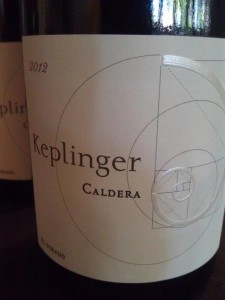
One of the astonishing statistics from El Dorado is that the grape tonnage sold outside of El Dorado County increased 67% from 1,646 tons in 2011 to 2,741 in 2012. In addition to large-scale contracts with popular brands like Bogle and Delicato; on a smaller scale, hip indie wineries are purchasing fruit from the region, too. Long before she became the cover girl on the March 2014 issue of the Wine Spectator, Helen Keplinger developed a passion for making complex wines with the pristine fruit she purchases from the high-elevation Caldera Vineyard owned by Ron Mansfield which features a mélange of Aikens loam and ancient lava pebbles.
SawyerSomm notes: Big, dense and ethereal; this new release is a blend of Mourvedre, Grenache and Counoise. On the nose, the wine features tantalizing aromas of wild berries, thinly sliced prosciutto, leather, mineral, red earth and exotic spices. After the aromas cross over to the palate, they are further amplified with layers of core fruits, wild strawberry, black plum, blackberry and allspice; balanced structure; a generous amount of acidity to support the weight of the wine; and long dry finish. Superb, complex and worth the price. It’s also worth noting that Helen makes a delicious Rhone-style white from the region. It’s name? “El Dorado,” of course. www.keplingerwines.com.
More Wine News of Note… Congratulations to the Napa Valley Vintners for the most successful wine auction of all time last weekend! With events held at the Meadowood Resort in St. Helena, Charles Krug Winery and other special sites throughout the valley, the 34th annual Auction Napa Valley raised $18.4 million for local charities. Kudos to the fantastic wineries, chefs, sommeliers, wine collectors and avid wine lovers who participated at the record-setting weekend event. For more information on the festivities, photos and more highlights, visit www.napavalleyvintners.com.
Coming later this month: Results from the Sunset International Wine Competition and California State Fair Commercial Wine Competition (both of which I recently judged)…Tips on the exciting new food and drink culture in Sacramento…A celebration of the accomplishments at the Bacigalupi Vineyard in Russian River Valley…Hot Pinot Noir picks from the Santa Cruz Mountains and tasty Barbera notes from the Sierra Foothills…Highlights from the Lake County Wine Competition and the San Francisco International Wine Competition which I’ll be judging over the next couple weeks…a preview of the upcoming #SonomaWineCountryWeekend, August 29-31… and much more!
Cheers, Christopher
Think that the elections are over? Well, think again. In the hilarious satirical comedy Bob Roberts (1992), Tim Robbins plays an edgy folksinger running for senator in Pennsylvania. On the campaign trail, Roberts uses a mélange of entertaining music videos filled with snarky language and political lyrics to get his point across to potential voters.
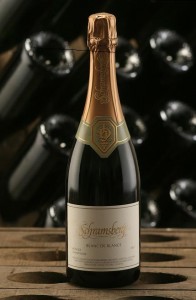 But there’s a dark side to Roberts as well, particularly his past connections to Wall Street and Broken Dove, a subversive group with potential links to a drug cartel and the Iran-Contra hearings. As the scandal starts to surface, the tension builds and Roberts is shot and wounded. So will Roberts be able to catch his arch-nemesis Senator Brickley Paiste (Gore Vidal)? It’s a question that remains to be answered at the end of the film.
But there’s a dark side to Roberts as well, particularly his past connections to Wall Street and Broken Dove, a subversive group with potential links to a drug cartel and the Iran-Contra hearings. As the scandal starts to surface, the tension builds and Roberts is shot and wounded. So will Roberts be able to catch his arch-nemesis Senator Brickley Paiste (Gore Vidal)? It’s a question that remains to be answered at the end of the film.
In addition to Vidal and Robbins (who wrote and directed the film), the all-star cast in the film includes Alan Rickman, Susan Sarandon, James Spader, David Strathairn, Peter Gallagher, Fred Ward, John Cusack and a very young Jack Black. Fun and gritty to the end, Bob Roberts is an extremely entertaining film that will change the way you look at American politics.
In terms of beverages, like the main character, Bob Roberts is a film that calls for a wine with self-confidence and a hint attitude that demands respect. While watching the election results on television, Robert’s party can be seen drinking French Champagne. But if he was a true patriotic contender, they should have been drinking American bubbles.
An elegant example is the Schramsberg 2011 Blanc de Blancs Brut, North Coast ($37), a sophisticated sparkling wine with aromas of pineapple, lemon chiffon, warm brioche and tantalizing flavors of crisp apple, citrus, and roasted hazelnut.
Meaning “white from white,” this blanc de blancs is made with 100% Chardonnay grapes. For history buffs, the sparkling gem is modeled after the style of Schramsberg wine that President Richard Nixon took to the Chinese emperor in 1972. Politics and wine—all encapsulated in one bottle!